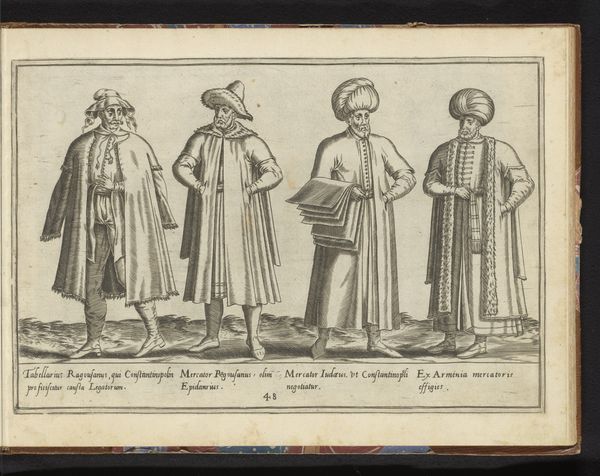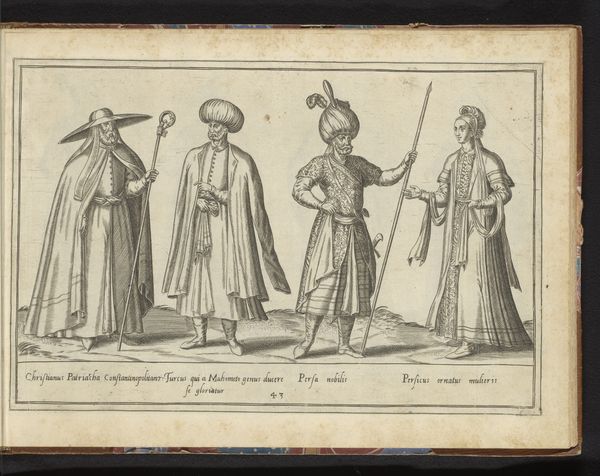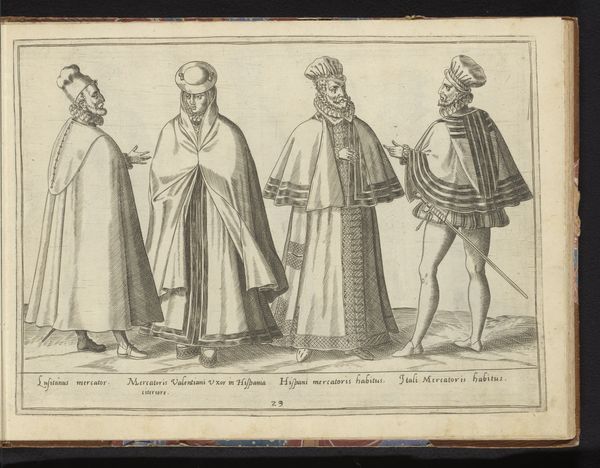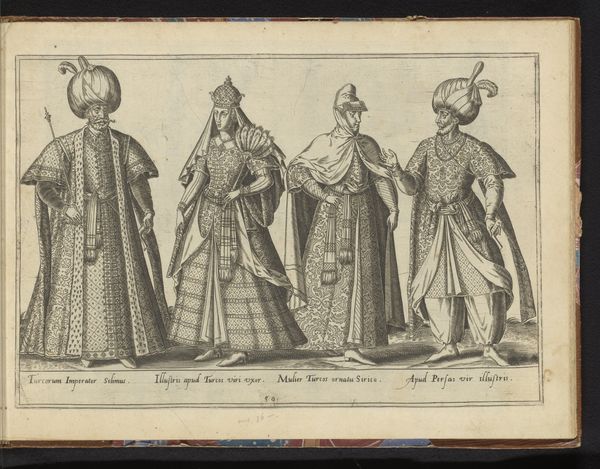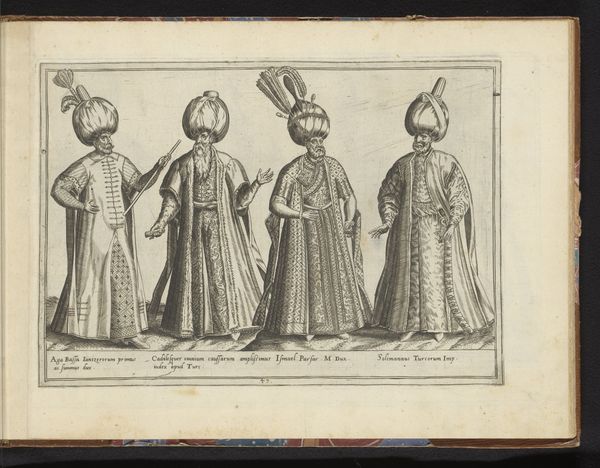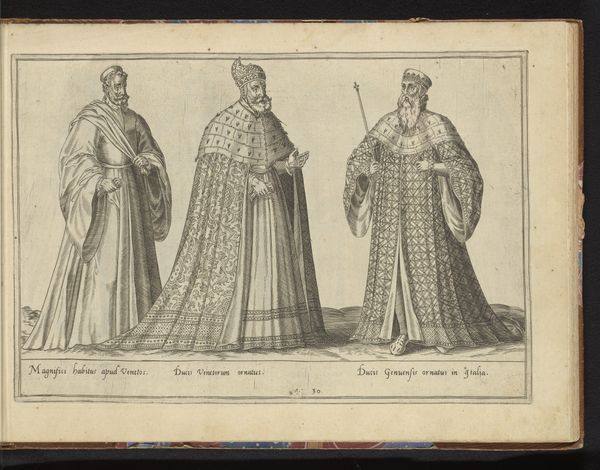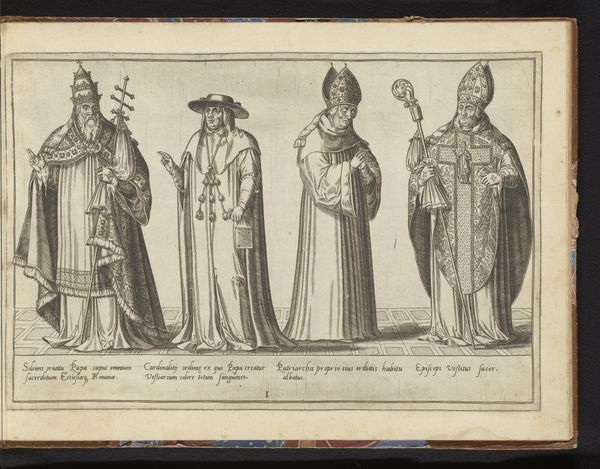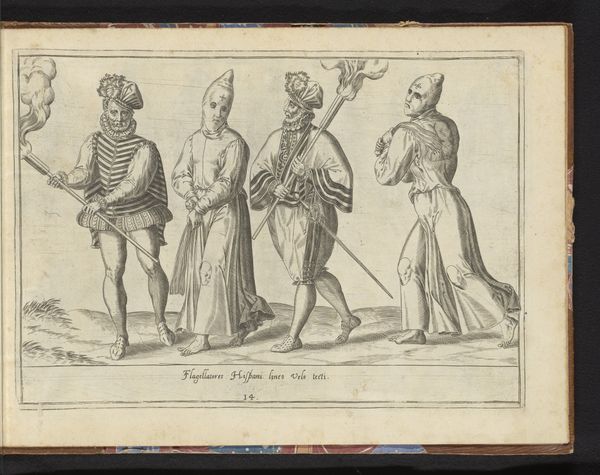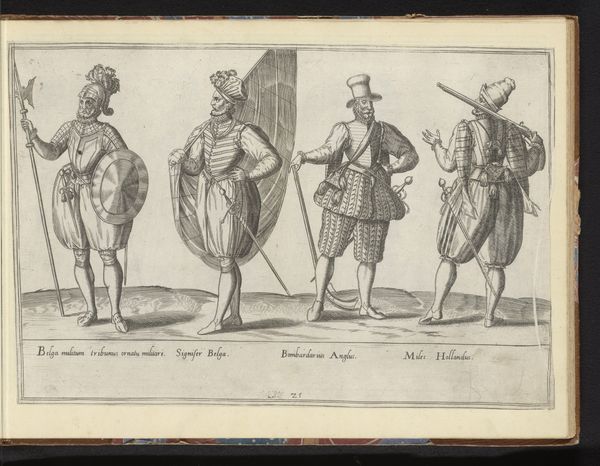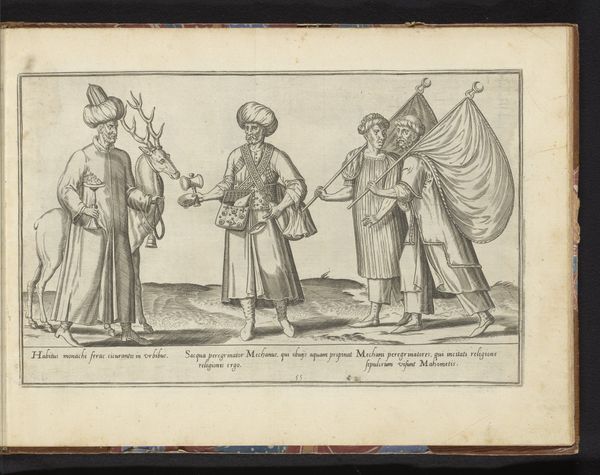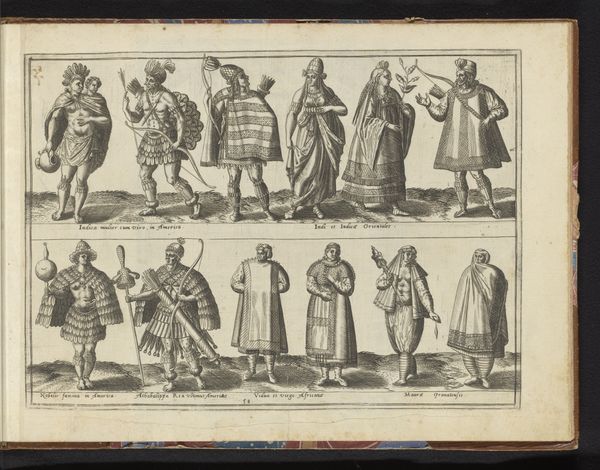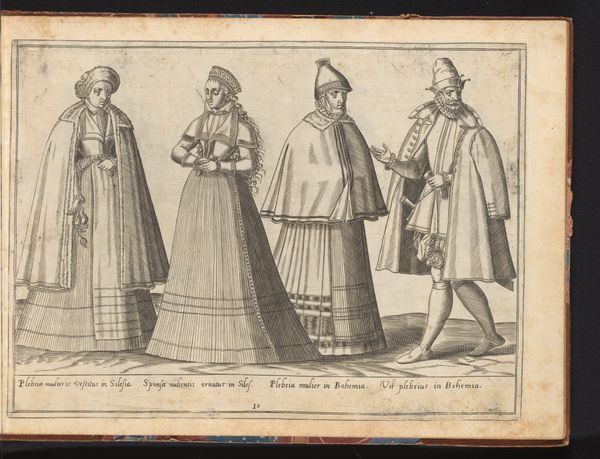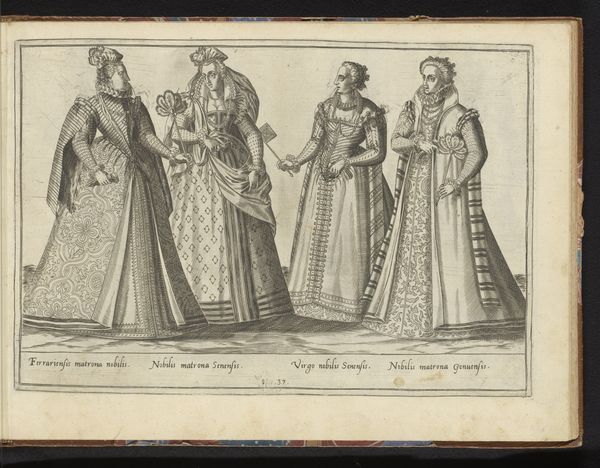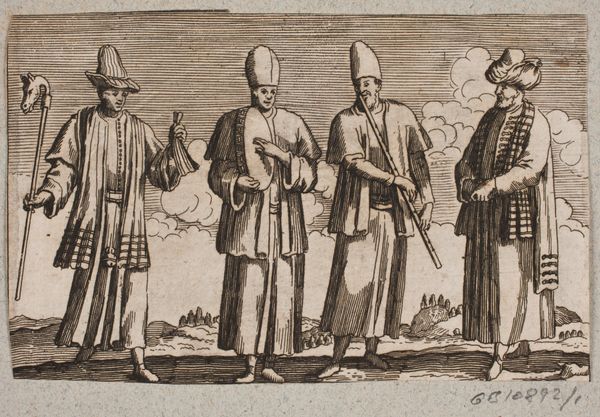
print, engraving
#
portrait
# print
#
11_renaissance
#
coloured pencil
#
genre-painting
#
history-painting
#
engraving
Dimensions: height 265 mm, width 360 mm
Copyright: Rijks Museum: Open Domain
Curator: Here we have an engraving by Abraham de Bruyn, created before 1581. The Rijksmuseum holds this print titled "Four Russians, Dressed According to the Fashion of ca. 1580." Editor: Immediately striking is the variety in their attire; they range from regal robes to functional military gear. It hints at social stratification but with this unifying thread of "Russianness," if that makes sense. Curator: Absolutely. What De Bruyn captures, I think, is a visual ethnography that would have fed the curiosity of Western Europeans at the time. This print serves as a sort of document. It categorizes distinct roles through costume, offering a glimpse into a relatively unknown culture. Editor: The symbolism, though! Each element—the furs, the weapons, even the stances—conveys messages about power, status, and perhaps even intention. Look at the first figure: that extravagant fur hat is practically screaming wealth and authority, a very recognizable visual language. Curator: Indeed. It speaks to how early modern Europeans perceived "otherness" and Russia’s place in the world. Remember, travel and direct contact were still relatively limited for most, making imagery like this highly influential in shaping perceptions. These representations weren’t neutral, but loaded with cultural assumptions. The inscription below each figure further clarifies these perceptions and emphasizes what was regarded as "Russian" and, simultaneously, alien. Editor: It is fascinating how fashion can encapsulate so much history. What seems like a simple portrait is actually a dense network of signifiers. Even today, we use dress to convey identity, affiliations, and aspirations. It creates a visual continuity over centuries, even if the specifics shift. Curator: Precisely! This piece acts like a window into a historical moment of intercultural encounter and categorization, preserved and perpetuated through print. It speaks volumes about how societies construct images of themselves and others. Editor: Well, I find I can’t help but see in it both an historical record and a psychological study on image making, showing the timeless act of how we understand ourselves and others through outward appearance.
Comments
No comments
Be the first to comment and join the conversation on the ultimate creative platform.
